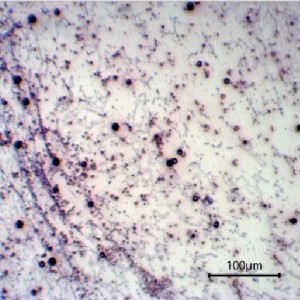Cytomorphological analysis of liquid platelet-rich fibrin produced with the DUO fixed angle centrifuge (Process, France) for use in the regenerative therapy of skin ulcers

Submitted: June 3, 2023
Accepted: October 16, 2023
Published: December 14, 2023
Accepted: October 16, 2023
Abstract Views: 289
PDF: 71
Supplementary Materials: 19
PDF (Italiano): 85
Materiali Supplementari (Italiano): 24
Supplementary Materials: 19
PDF (Italiano): 85
Materiali Supplementari (Italiano): 24
Publisher's note
All claims expressed in this article are solely those of the authors and do not necessarily represent those of their affiliated organizations, or those of the publisher, the editors and the reviewers. Any product that may be evaluated in this article or claim that may be made by its manufacturer is not guaranteed or endorsed by the publisher.
All claims expressed in this article are solely those of the authors and do not necessarily represent those of their affiliated organizations, or those of the publisher, the editors and the reviewers. Any product that may be evaluated in this article or claim that may be made by its manufacturer is not guaranteed or endorsed by the publisher.
Similar Articles
- Antonella Marcoccia, Carlo Salvucci, Tina D'Alesio, Tarquinia Nuzzo, Anoush Vartanian, Tiziana Guastafierri, Maria Grazia Modesti, Ultrasonic-assisted wound debridement for scleroderma digital ulcers , Italian Journal of Wound Care: Vol. 1 No. 1 (2017)
- Mario Marazzi, Federica Mingotto, Marta Cecilia Tosca, Barbara Antonioli, Marta Galuzzi, Maria Luisa Torre, Caterina Tartaglione, Demetrio Manenti, Alessandro Scalise, Regenerative medicine: the blurred boundaries between life sciences and biotechnology towards a new inductive medicine of the third millennium , Italian Journal of Wound Care: Vol. 1 No. 1 (2017)
- Alessandro Crisci, Carmela Rescigno, Michela Crisci, The L-PRF membrane and its derivatives useful in wound care surgery , Italian Journal of Wound Care: Vol. 3 No. 1 (2019)
- Chiara Bissoni, Klarida Hoxha, Alessandro Scalise, Pasquale Longobardi, Hyperbaric oxygen therapy and negative pressure wound therapy in the treatment of non-healing wounds , Italian Journal of Wound Care: Vol. 2 No. 3 (2018)
- Giancarlo delli Santi, Claudio Pilati, Alessandro Borgognone, Simone Tiberti, Peripheral blood mononuclear cells enhance sacral wound healing in a patient with spinal cord injury: a case report , Italian Journal of Wound Care: Vol. 8 No. 3 (2024)
- Viviana Nebbioso, Giuseppe Nebbioso, Francesco Petrella, Daniele Naviglio, Use of biological products in the healing process of skin lesions , Italian Journal of Wound Care: Vol. 7 No. 1 (2023)
- Fabrizio Moffa, Alberico Balbiano da Colcavagno, Elia Ricci, Use of adipose tissue stem cells in chronic skin lesions: clinical experience , Italian Journal of Wound Care: Vol. 2 No. 2 (2018)
- Giuseppe Nebbioso, Ciro Falasconi, Viviana Nebbioso, Francesco Petrella, Antiseptics and control of bacterial load in venous ulcers , Italian Journal of Wound Care: Vol. 2 No. 2 (2018)
- Aurora Parodi, Valeria Maria Messina, Manuela Martolini, Shpresa Haxhiaj, Emanuele Claudio Cozzani, Update on the management and treatment of patients with chronic skin lesions , Italian Journal of Wound Care: Vol. 5 No. 2 (2021)
- Giovanni Mosti, Vincenzo Mattaliano, Pietro Picerni, Costantino Christou, Skin grafting in the treatment of hard-to-heal leg ulcers , Italian Journal of Wound Care: Vol. 2 No. 1 (2018)
You may also start an advanced similarity search for this article.


 https://doi.org/10.4081/ijwc.2023.103
https://doi.org/10.4081/ijwc.2023.103




